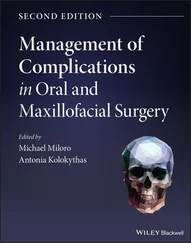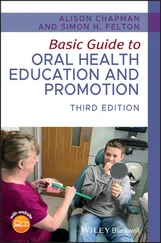Analysis of fluorotic enamel indicates that it is more porous and less mineralized. There is also evidence of retention of some amelogenin protein, indicating a defect in maturation, possibly related to the inhibition of the proteolytic breakdown of enamel proteins. In addition, ultrastructural studies of ameloblasts indicate that fluoride can disrupt the secretory phase by obstructing the normal vesicular transport of secretory proteins.
References
1. Koyama E, Wu C, Shimo T, Iwamoto M, Ohmori T, Kurisu R, Ookura T, Bashir M, Abrams WR, Tucker T, Pacifici M. Development of stratum intermedium and its role as a Sonic Hedgehog -signaling structure during odontogenesis. Dev Dyn 2001;222:178–191.
2. Baba T, Terashima T, Oida S, Sasaki S. Determination of enamel protein synthesized by recombined mouse molar tooth germs in organ culture. Arch Oral Biol 1996;41: 215–219.
3. Couwenhoven RI, Snead ML. Early determination and permissive expression of amelogenin transcription during mouse mandibular first molar development. Dev Biol 1994;164: 290–299.
4. Casasco A, Calligaro A, Casasco M. Proliferative and functional stages of rat ameloblast differentiation as revealed by combined immunocytochemistry against enamel matrix proteins and bromodeoxyuridine. Cell Tissue Res 1992;270: 415–423.
5. Smith CE, Warshawsky H. Cellular renewal in the enamel organ and the odontoblast layer of the rat incisor as followed by radioautography using H3-thymidine. Anat Rec 1975; 183:523–562.
6. Harada H, Kettunen P, Jung H-S, Mustonen T, Wang YA, Thesleff I. Localization of putative stem cells in dental epithelium and their association with Notch and FGF signaling. J Cell Biol 1999;147:105–120.
7. Zajicek G, Bar-Lev M. Kinetics of the inner enamel epithelium in the adult rat incisor. I. Experimental results. Cell Tissue Kinetics 1971;4:155–162.
8. Smith CE, Warshawsky H. Movement of entire cell populations during renewal of the rat incisor as shown by radioautography after labeling with H3-thymidine. Am J Anat 1976;145:225–260.
9. Thesleff I, Jernvall J. The enamel knot: A putative signaling center regulating tooth development. Cold Spring Harbor Symp Quant Biol 1997;62:257–267.
10. Tanikawa Y, Bawden JW. The immunohistochemical localization of phospholipase C γ and the epidermal growth-factor, platelet-derived growth-factor and fibroblast growth-factor receptors in the cells of the rat molar enamel organ during early amelogenesis. Arch Oral Biol 1999;44:771–780.
11. Garant P. The demonstration of complex gap junctions between the cells of the enamel organ with lanthanum nitrate. J Ultrastruc Res 1972;40:333–348.
12. Warshawsky H. A freeze-fracture study of the topographic relationship between inner enamel-secretory ameloblasts in the rat incisor. Am J Anat 1978;152:153–208.
13. Sawada T, Yanagisawa T, Takuma S. Epithelial-mesenchymal junctional area in an early stage of odontogenesis in Macaca fuscata . Adv Dent Res 1987;1:141–147.
14. Snead M, Lau E, Zeichner-David M, Nanci A, Bendayan M, Bringas P, Bessem C, Slavkin H. Relationship of the ameloblast biochemical phenotype to morpho- and cytodifferentiation. In: Firtel A, Davidson E (eds). Molecular Approaches to Developmental Biology. New York: Liss, 1987:641–652.
15. Zeichner-David M, MacDougall M, Slavkin H. Enamelin gene expression during fetal and neonatal rabbit tooth organogenesis. Differentiation 1983;25:148–155.
16. Nanci A, Zalzal S, Lavoie P, Kunikata M, Chen W-Y, Krebsbach PH, Yamada Y, Hammarstrom L, Simmer JP, Fincham AG, Snead ML, Smith CE. Comparative immunocytochemical analyses of the developmental expression and distribution of ameloblastin and amelogenin in rat incisors. J Histochem Cytochem 1998;46:911–934.
17. Bawden JW, Rozell B, Wurtz T, Fouda N, Hammarström L. Distribution of protein kinase Cδ and accumulation of extracellular Ca 2+during early dentin and enamel formation. J Dent Res 1994;73:1429–1436.
18. Reith EJ. The ultrastructure of ameloblasts during matrix formation and the maturation of enamel. Biophys Biochem Cytol 1961;9:825–840.
19. Warshawsky H, Smith CE. Morphological classification of rat incisor ameloblasts. Anat Rec 1974;179:423–446.
20. Smith CE, Nanci A. Overview of morphological changes in enamel organ cells associated with major events in amelogenesis. Int J Dev Biol 1995;39:153–161.
21. Deutsch D, Catalano-Sherman J, Dafni L, David S, Palmon A. Enamel matrix proteins and ameloblast biology. Connect Tissue Res 1995;32:97–107.
22. Smith CE. Stereological analysis of organelle distribution within rat incisor enamel organ at successive stages of amelogenesis. In: Belcourt AB, Ruch J-V (eds). Tooth Morphogenesis and Differentiation. Paris: INSERM, 1984:273–282.
23. Weinstock A, Leblond CP. Elaboration of the matrix glycoprotein of enamel by the secretory ameloblasts of the rat incisor as revealed by radioautography after galactose-3H injection. J Cell Biol 1971;51:26–51.
24. Nanci A, Bendayan M, Slavkin H. Enamel protein biosynthesis and secretion in mouse incisor secretory ameloblasts as revealed by high-resolution immunocytochemistry. J Histochem Cytochem 1985;33:1153–1160.
25. Smith CE, Nanci A. Protein dynamics of amelogenesis. Anat Rec 1996;245:186–207.
26. Warshawsky H. Ultrastructural studies on amelogenesis. In: Butler W (ed). The Chemistry and Biology of Mineralized Tissues. Birmingham, AL: EBSCO Media, 1985:33–45.
27. Simmelink JW. Mode of enamel matrix secretion. J Dent Res 1982;61:1483–1488.
28. Kudo N. Effect of colchicine on the secretion of matrices of dentine and enamel in the rat incisor: An autoradiographic study using 3H-proline. Calcif Tissue Res 1975;18: 37–46.
29. Sasaki T, Segawa K, Takiguchi R, Higashi S. Intercellular junctions in the cells of the human enamel organ as revealed by freeze-fracture. Arch Oral Biol 1984;29:275–286.
30. Nanci A, Warshawsky H. Characterization of putative secretory sites on ameloblasts of the rat incisor. Am J Anat 1984;171:163–189.
31. Dumont ER. Mammalian enamel prism patterns and enamel deposition rates. Scanning Microsc 1995;9:429–442.
32. Martin LB, Boyde A. Rates of enamel formation in relation to enamel thickness in hominoid primates. In: Fearnhead RW, Suga S (eds). Tooth Enamel, vol 4. Amsterdam: Elsevier, 1984: 447–451.
33. Greenberg G, Bringas P, Slavkin HC. The epithelial genotype controls the pattern of extracellular enamel prism formation. Differentiation 1983;25:32–43.
34. Boyde A. A 3-D model of enamel development at the scale of one inch to the micron. Adv Dent Res 1987;1:135–140.
35. Gwinnett AJ. Human prismless enamel and its influence on sealant penetration. Arch Oral Biol 1973;18:441–444.
36. Warshawsky H, Josephsen K, Thylstrup A, Fejerskov O. The development of enamel structure in rat incisors as compared to the teeth of monkey and man. Anat Rec 1981;200: 371–399.
37. Warshawsky H, Nanci A. Stereo electron microscopy of enamel crystallites. J Dent Res 1982;61:1504–1514.
38. Boyde A. Carbonate concentration, crystal centers, core dissolution, caries, cross striations, circadian rhythms, and compositional contrast in the SEM. J Dent Res 1979;58(spec iss B):981–983.
39. Goldberg M, Vermelin L, Mostermans P, Lecolle S, Septier D, Godeau G, LeGeros R. Fragmentation of the distal portion of Tomes’s processes of secretory ameloblasts in the forming enamel of rat incisors. Connect Tissue Res 1998;38:159–169.
40. Dohi N, Murakami C, Tanabe T, Yamakoshi Y, Fukae M, Yamamoto Y, Wakida K, Shimizu M, Simmer JP, Kurihara H, Uchida T. Immunocytochemical and immunochemical study of enamelins, using antibodies against porcine 89-kDa enamelin and its N-terminal synthetic peptide, in porcine tooth germs. Cell Tissue Res 1998;293:313–325.
Читать дальше












